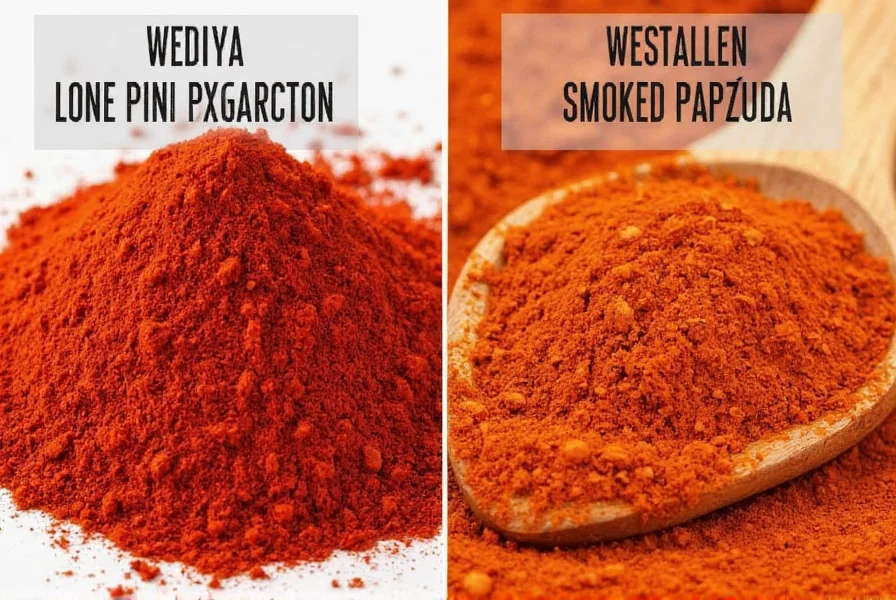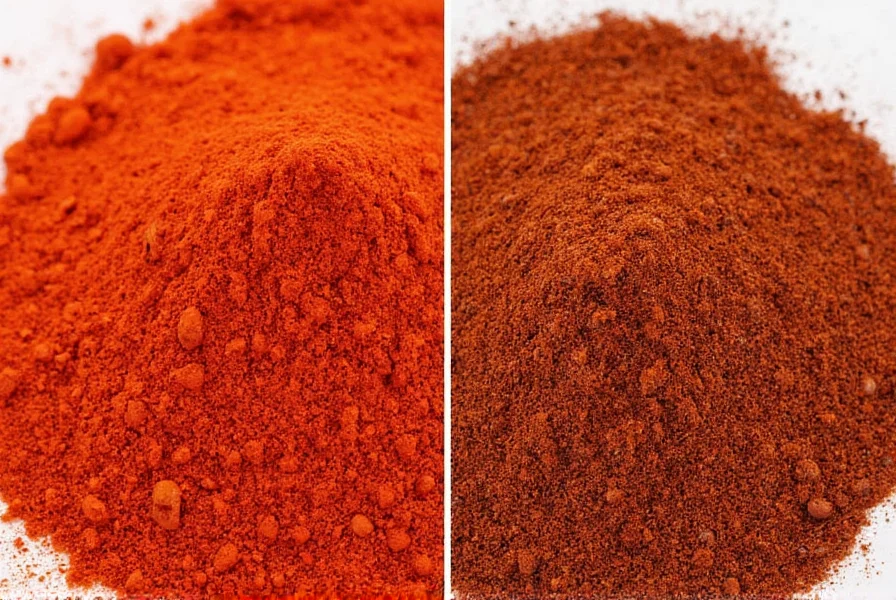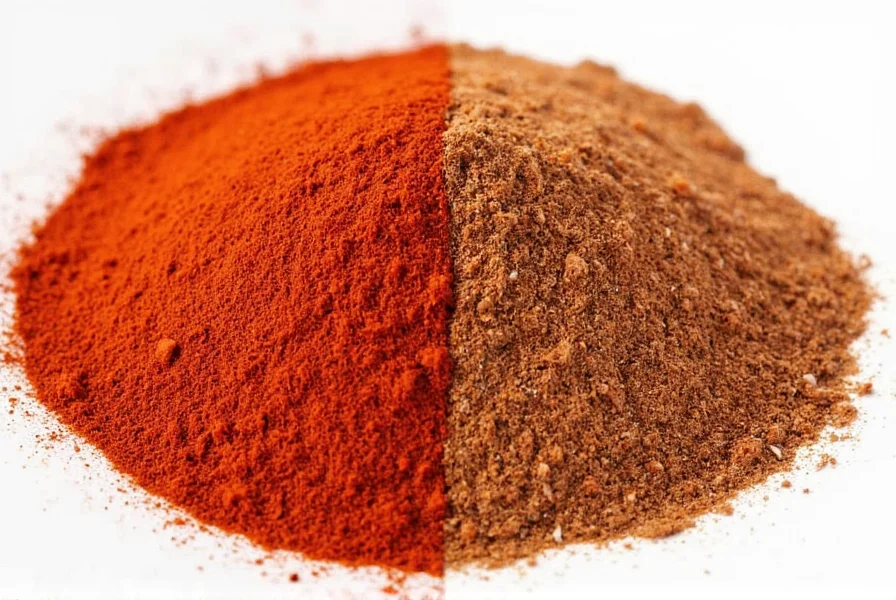The world of paprika can be confusing for home cooks and professional chefs alike. Understanding the distinction between standard paprika and its smoky counterpart is essential for creating authentic dishes that showcase their unique characteristics. Both spices originate from Capsicum annuum peppers, but their processing methods create dramatically different flavor experiences that can make or break your culinary creations.
What Exactly Is Paprika?
Paprika is a vibrant red spice made by grinding dried peppers, primarily cultivated in Hungary, Spain, and other regions with suitable climates. The peppers used range from sweet varieties like capsicum annuum to hotter types, creating different paprika classifications. Traditional Hungarian paprika, considered by many as the gold standard, comes in eight distinct varieties ranging from mild and sweet (édesnemes) to intensely hot (erős).
The production process involves harvesting ripe peppers, drying them either in the sun or using controlled methods, and then grinding them into a fine powder. Quality paprika maintains its brilliant red color and fresh pepper aroma without any additional ingredients. When shopping for paprika, look for products with only "paprika" listed in the ingredients to avoid blends with fillers or anti-caking agents that diminish flavor quality.

The Art of Smoked Paprika Production
Smoked paprika, known as pimentón in Spain, undergoes an additional critical step that transforms its character. After harvesting, the peppers are slowly smoked over oak wood fires for one to two weeks before drying and grinding. This traditional smoking process, particularly in regions like La Vera in Spain, imparts a distinctive smoky flavor that cannot be replicated through other methods.
There are three main varieties of smoked paprika:
| Type | Heat Level | Flavor Profile | Best Uses |
|---|---|---|---|
| Pimentón Dulce | Mild | Sweet with pronounced smoke | Stews, roasted vegetables, aioli |
| Pimentón Agridulce | Medium | Bittersweet with moderate smoke | Paella, chorizo, tomato sauces |
| Pimentón Picante | Hot | Spicy with intense smoke | BBQ rubs, spicy bean dishes, marinades |
Key Differences You Need to Know
Understanding the differences between these two spices goes beyond just flavor. Their chemical composition affects how they behave in cooking:
- Flavor Profile: Regular paprika offers pure pepper flavor ranging from sweet to hot, while smoked paprika adds a distinct wood-smoke dimension that can dominate dishes if overused
- Color Stability: Smoked paprika maintains its color better through cooking, while regular paprika can fade when exposed to high heat
- Solubility: The smoking process affects how the spice blends with fats and liquids, making smoked paprika more suitable for dry rubs
- Heat Sensitivity: Regular paprika's flavor diminishes faster when cooked, while smoked paprika's flavor intensifies with cooking time
When to Use Each Spice: Culinary Applications
Choosing between paprika and smoked paprika can make or break your dish. Here's when to reach for each:
Use regular paprika when:
- Preparing traditional Hungarian goulash or chicken paprikash
- Adding color to potato salads or deviled eggs without altering flavor
- Creating spice blends where pure pepper flavor is essential
- When making dishes that will cook for extended periods (regular paprika's flavor fades with long cooking)
Use smoked paprika when:
- Preparing Spanish dishes like paella, patatas bravas, or chorizo
- Adding depth to vegetarian dishes that need "meaty" flavor
- Creating barbecue rubs or marinades for grilled meats
- Enhancing tomato-based sauces with smoky complexity
- When you want to add smoke flavor without actual smoking

Substitution Guide: Making the Switch
Running out of one variety doesn't have to ruin your recipe. When substituting between paprika types, consider these guidelines:
- Smoked for regular: Use ½ to ⅔ the amount of smoked paprika, as its flavor is more intense. Add a pinch of sweet paprika or cayenne to balance if needed
- Regular for smoked: Add ¼ teaspoon liquid smoke per teaspoon of paprika, or include smoked ingredients like bacon or chipotle peppers in your recipe
- For heat adjustment: Remember that heat levels vary independently from smoke flavor—check the specific variety you're using
Professional chefs often keep both varieties on hand but recommend building your spice collection gradually based on the cuisines you cook most frequently.
Regional Variations and Quality Indicators
Not all paprika is created equal. Understanding regional designations helps ensure you're getting authentic products:
- Hungarian paprika: Protected designation of origin (PDO) for products from the Kalocsa and Szeged regions, known for their sweet varieties and traditional production methods
- Spanish pimentón: Also PDO-protected, particularly from La Vera, where the smoking process uses specific oak varieties and traditional methods
- American paprika: Often milder and less complex, frequently blended with other spices—check labels carefully
Look for packaging that specifies the region of origin and production method. High-quality smoked paprika will list "smoked over oak" or similar specifics, while premium regular paprika will indicate the pepper varieties used.
Storage Tips for Maximum Flavor Longevity
Both paprika varieties are sensitive to light, heat, and oxygen, which degrade their flavor and color. Follow these storage guidelines:
- Store in airtight containers away from light (dark glass or opaque containers work best)
- Keep in a cool, dark place—never above the stove or near other heat sources
- Refrigeration extends shelf life significantly, especially for smoked varieties
- Use within 6-12 months for peak flavor (smoked paprika generally lasts slightly longer)
- Check freshness by aroma—fresh paprika should have a vibrant, pepper-forward scent
Properly stored, high-quality paprika maintains its flavor compounds longer, ensuring your dishes benefit from the full spectrum of flavors these spices offer.
Final Considerations for Culinary Success
Mastering the use of paprika and smoked paprika requires understanding their unique properties and how they interact with other ingredients. The key is to treat them as distinct ingredients rather than interchangeable variants. When developing recipes, consider the role the spice plays—whether it's primarily for color, heat, or flavor complexity—and choose accordingly.
Remember that quality matters significantly with both spices. Investing in authentic, single-origin paprika from reputable sources makes a noticeable difference in your cooking. As you experiment with both varieties, you'll develop an intuitive sense for when each spice enhances your dishes most effectively.
Frequently Asked Questions
Can I use smoked paprika in Hungarian recipes that call for regular paprika?
While possible, substituting smoked paprika in traditional Hungarian recipes will significantly alter the authentic flavor profile. Hungarian cuisine relies on the pure pepper flavor of regular paprika, and the smokiness would be considered inauthentic. If substituting, use only half the amount of smoked paprika to minimize flavor disruption.
Does smoked paprika contain actual smoke or is it flavored?
Authentic smoked paprika is made by physically smoking the peppers over wood fires (typically oak) before grinding. The smoke flavor comes from this traditional smoking process, not from artificial flavorings. Check the ingredient list—true smoked paprika should contain only peppers and possibly salt, with no "smoke flavor" additives.
Why does my paprika lose color so quickly in cooking?
Paprika's vibrant color comes from carotenoids that break down with heat exposure. Regular paprika fades faster than smoked varieties because the smoking process stabilizes some color compounds. To preserve color, add paprika toward the end of cooking or bloom it in oil at lower temperatures before incorporating into dishes.
Is there a significant nutritional difference between regular and smoked paprika?
Nutritionally, both varieties are similar as they come from the same base peppers. Both are excellent sources of vitamin A and antioxidants. The smoking process doesn't significantly alter the nutritional profile, though some heat-sensitive compounds may be affected. The primary difference remains in flavor compounds rather than nutritional content.
How can I tell if my paprika has gone bad?
Fresh paprika should have a vibrant red color and strong pepper aroma. Signs of spoilage include faded color (toward brown), musty or stale smell, clumping, or loss of flavor intensity. Properly stored paprika typically lasts 1-2 years, but flavor diminishes over time. When in doubt, rub a small amount between your fingers—if the aroma is weak, it's time to replace it.











 浙公网安备
33010002000092号
浙公网安备
33010002000092号 浙B2-20120091-4
浙B2-20120091-4